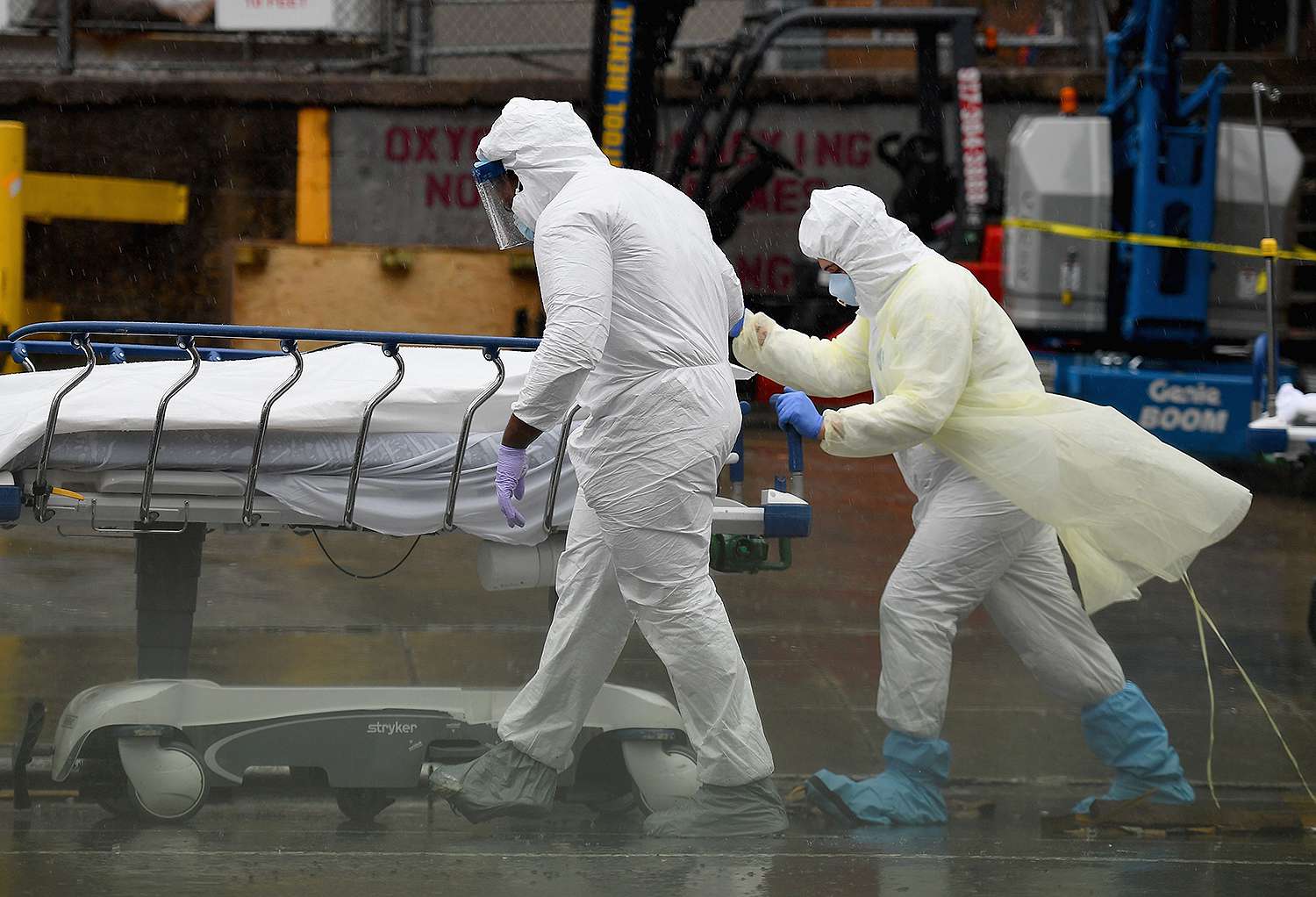
The coronavirus death toll in New York City is comparable to that of the 1918 flu pandemic, a new study has found.
A research letter published Thursday compares the two pandemics, specifically analyzing the first two months of the coronavirus outbreak in New York City and the peak of the 1918 influenza pandemic in the city.
“This cohort study found that the absolute increase in deaths over baseline (ie, excess mortality) observed during the peak of 1918 H1N1 influenza pandemic was higher than but comparable to that observed during the first 2 months of the COVID-19 outbreak in New York City,” the letter said.
“For anyone who doesn’t understand the magnitude of what we’re living through, this pandemic is comparable in its effect on mortality to what everyone agrees is the previous worst pandemic,” Jeremy S. Faust, an emergency physician at Brigham and Women’s Hospital in Boston who led the team of researchers, told The Washington Post.
Though the increase in deaths in New York City was higher in 1918, the researchers noted that the baseline mortality rates were also much higher in the early 20th century compared to now, “owing to improvements in hygiene and modern achievements in medicine, public health, and safety.”
As such, “the relative increase [of deaths] during early COVID-19 period was substantially greater than during the peak of the 1918 H1N1 influenza pandemic.”
In total, the flu pandemic resulted in approximately 50 million influenza-related deaths worldwide and 675,000 in the U.S, according to the Centers for Disease Control and Prevention. The latest data from The New York Times and Johns Hopkins University shows that the coronavirus has led to 166,100 reported deaths in the U.S. and 750,744 across the world. The Times reports that the grand total number of deaths, which includes unreported cases and other causes linked to the pandemic is likely around 200,000.
With coronavirus cases and deaths still on the rise in much of the country, the study also noted that recent polling shows that a majority of people in the U.S. “believe that some states lifted COVID-19 restrictions too quickly.”
“Specifically, shutdowns did not adequately lower caseloads in many areas, meaning that subsequent spikes in new cases during the summer stretched US hospital resources in many areas,” it said.
“We believe that our findings may help officials and the public contextualize the unusual magnitude of the COVID-19 pandemic, leading to more prudent policies that may help to decrease transmission by decreasing the effective reproduction number of SARS-CoV-2 and prevent the exhaustion of essential supplies of life-saving resources in the coming weeks and beyond.”
As information about the coronavirus pandemic rapidly changes, PEOPLE is committed to providing the most recent data in our coverage. Some of the information in this story may have changed after publication. For the latest on COVID-19, readers are encouraged to use online resources from CDC, WHO, and local public health departments. PEOPLE has partnered with GoFundMe to raise money for the COVID-19 Relief Fund, a GoFundMe.org fundraiser to support everything from frontline responders to families in need, as well as organizations helping communities. For more information or to donate, click here.
Source: Read Full Article